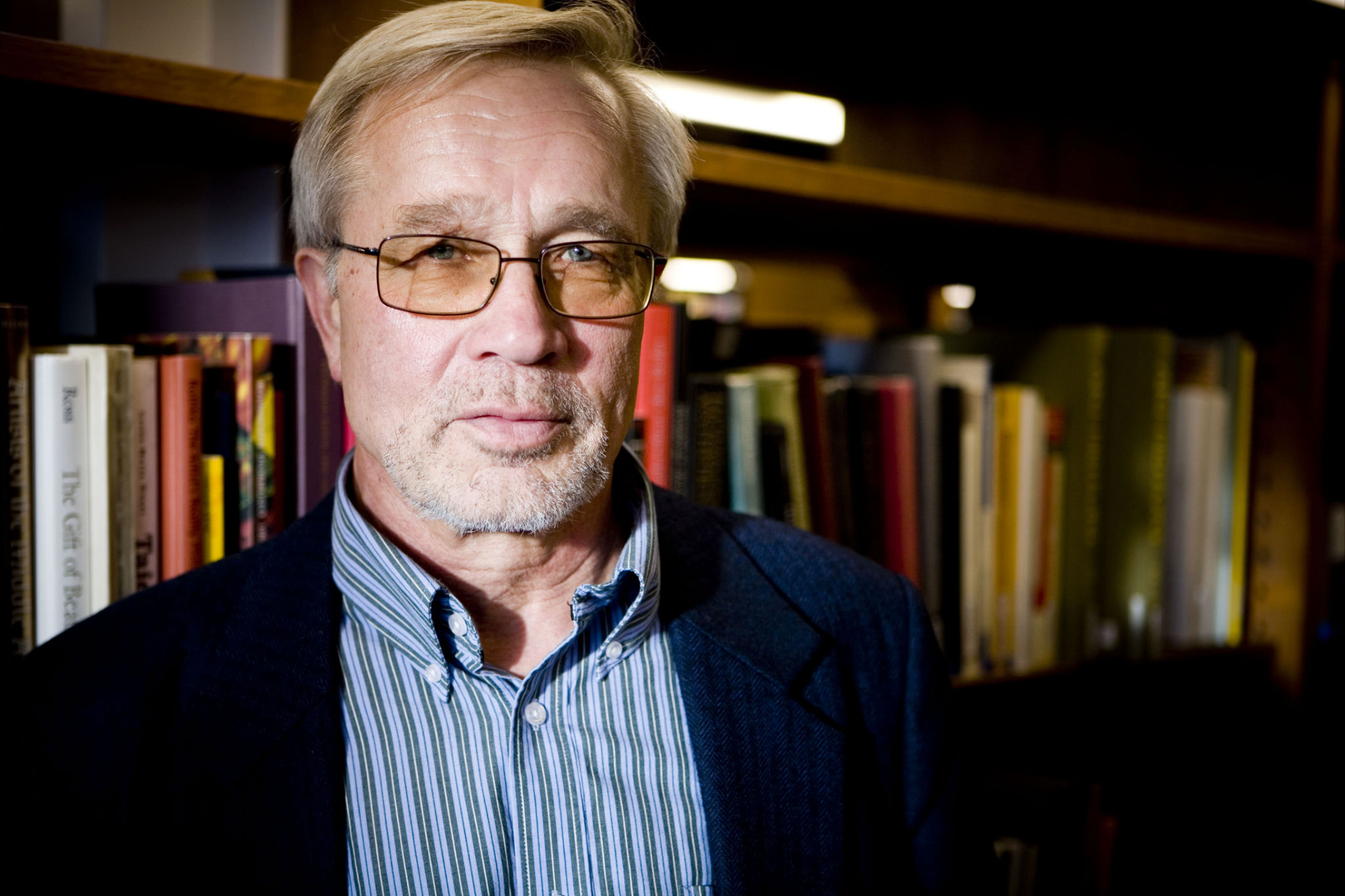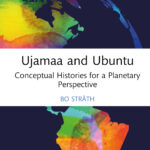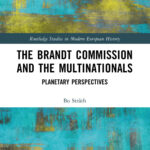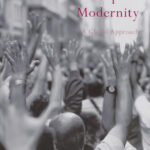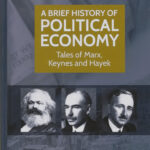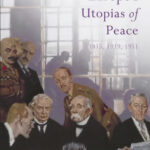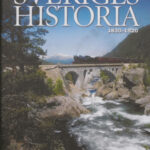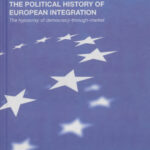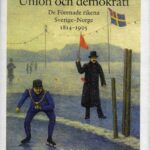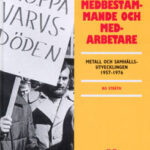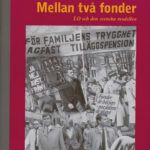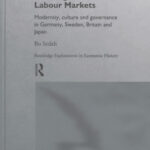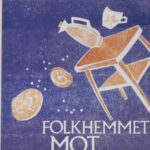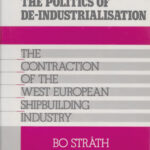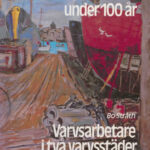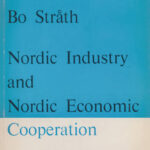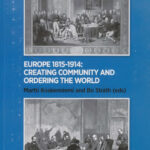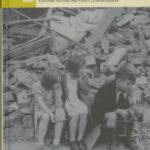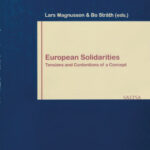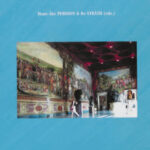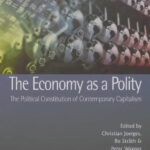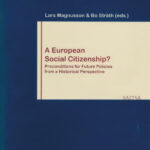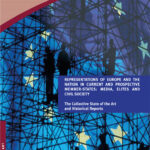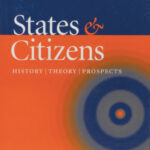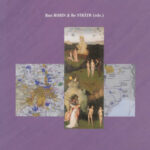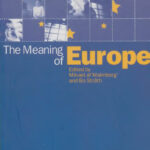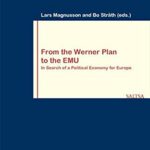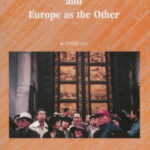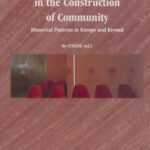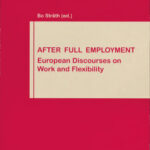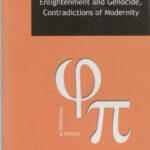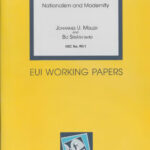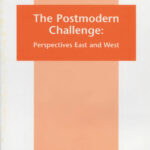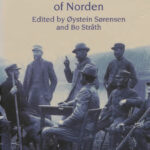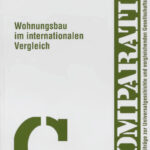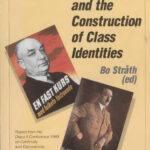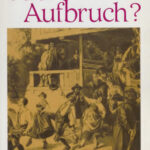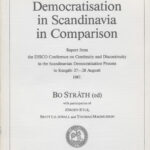Europe in Cinema – Cinema in Europe
Organiser: Luisa Passerini and Bo Stråth
Date: 22/05/2006
Place: La Cappella (Villa Schifanoia)
Links:
Programme (pdf)
The workshop aims to present and discuss the international research project Europe in Cinema, Cinema in Europe. This project intends to investigate the connection between cinema and ongoing processes of European identification. By this last term we mean the development, within today’s multicultural and global world, of a new sense of belonging to Europe and of new ways of feeling European. The specificity of the project is twofold: on the one hand, it will revisit the debate on European identity and propose a definition that includes ‘negative’ aspects of this identity, as well as the critique of Eurocentrism; on the other hand, it supposes that cinema is a privileged medium for studying the new processes of identification with Europe and that this special link must be explored and understood.
The morning will be devoted to presenting the three strands of enquiry of the research project. 1) Memories of Europe examines the distinctive forms taken by the relationship between memory and cultural identities in the European space, investigating how cinema has played a relevant role in forming and negotiating new European forms of identification. 2) The Public/Private Interface explores the changing configurations of the relationship between the private and the public spheres. It examines how subjectivity and inter-subjectivity emerging from the private/intimate spheres enmesh with public arenas. 3) Transcultural Spaces examine different relations between place and identification. Interconnections will be traced between new ways of being European, where traditional cinematic divisions – e. g., between South and North, East and West – are crossed or renegotiated and new identities proposed.
The afternoon will be dedicated to discussing how the sense of being (or not being) European has changed within what has been considered a “periphery” of Europe, the Balkans. Instead of putting Balkan on the margin of Europe, the workshop will see it as a centre of a cosmopolitan, multi- and intercultural Europe rich through experiences of centuries of commercial, cultural and religious exchange as well as warfare and pillage. In that sense, Balkan can be seen as a European in miniature. Instead of underpinning the myth of a time that has come to a standstill, the workshop wants to problematise the Western standard myth of a progressive time.
One Film — Many Histories: An Inquiry Into the Film Before the Rain
22-23 April 1999 Teatro, Badia Fiesolana
Workshop of Professor Bo Stråth
Organised by Robert Rosenstone, Bo Stråth and Erik Tängerstad
The reason why „Before the Rain“ is a fruitful point of departure for a workshop on Film and History lies in its composition. Being in the early 1990s, it can be said to thematize the role of ethnicity in the wake of dissolving nation-states. In this respect, it depicts contemporary London just as it is an explicit commentary on the downfall of Yugoslavia. The film’s protagonist is simultaneously a photographer for a London agency, a contemporary witness „from outside“, and as a Macedonian, an active participant „from inside“. What does it mean to be „outside“ or „inside“ a conflict like the one in the Balkans? The film addresses this question by showing a gunfight between rival parties from former Yugoslavia. This fight takes place in a posh London restaurant. The war does not halt at spacial borders. It is no longer relevant to differentiate between „discourse“ on the one side and „reality“ on the other. These old notions of „discourse“ and „reality“ have been blurred by now, and this is also one of the film’s leitmotifs.
Beyond this, the name of the film is telling in itself. The film begins and ends with the drops of the rain that are about to fall. The entire film takes place before the rain. In this sense, it does not just reflect the contemporary situation by telling a story of the past but explicitly prophecizes a future. It does all this by telling a circular story that is enclosed within itself, without opening to the past or the future. This film can thus be called truly poetic because it is untimely. At the same time, it can be used as a document of the early 1990s. Taken together, the film „Before the Rain“challenges everybody interested in film and history. Because this film, also at a profound level, actively blurs the genres of „fact“ and „fiction“ it is also a challenge in the ongoing process of rewriting history. In this respect, it is crucial to incite a discussion about the methods and the theoretical reflections used in telling the story of the film because without any active debate about theory and method, no rewriting of history can take place.
Program
Wednesday, April 21
14.00: Screening of: Before the Rain
The film’s director and screenwriter Milcho Manchevski will give a short introduction.
Place: The cinema „Spaziouno“, via del Sole 10 (near Santa Maria Novella).
Thursday, April 22
Morning session
9.30 – 11.00: History, Film and Written Reality
Bo Stråth: The Cultural Construction of Community
Robert Rosenstone: Before „Before the Rain“ – The Historian, History, and Film
Erik Tängerstad: „Before the Rain“ – A History Written With Film?
11.00 – 11.30 Coffee in Bar Teatro
11.30 – 13.00 General discussion
13.00 – 14.30 Lunch in Sala Rossa
Afternoon session
14.30 -18.00: Film and History
Anton Kaes: Film as History
Robert Burgoyne: Ethnic Nationalism and Globalisation
Ian Christie: To be announced
20.30 Dinner at Restorante Dino, via Ghibellina 51r
Friday, 23 April
Morning session
Part 1: 9.30 – 10.30 Film and History (continued)
Thomas Elsaesser: Writing-Rewriting Historical Violence
10.30-10.45 Coffee in Bar Theatro
Part 2: 10.45-13.00 The Balkans as History
Dina Iordanova: Teleology of Conflict – Macedoinan Topics and Narrative
Victor Friedman: Fable as History: The Macedonian context of „Before the Rain“
Bengt Holmen: National Identity and Ethnical Conflict in Macedonia
13.00-14.30 Lunch in Sala Rosa
Afternoon session
14.30 – 18.00 Final discussion
20.00 Dinner at Hotel Demidoff
Art and Fact: The Possibilities of Representation
The Research Project: „The Cultural Construction of Community in the Process of Modernization“
Workshop Florence, 19-20 April 1999, Sala Europa, Villa Schifanoia
Directed by Bo Stråth
This workshop aspires to critically confront a problem of representation inherent to contemporary attempts at scientific depiction of the past and investigate the possibilities of artistic methods as augmentative factors in the historical sciences. It is an attempt to widen the horizon of the project „The Cultural Construction of Community in Modernisation Processes: Sweden and Germany in Comparison“ by exploring the possibilities that art may have not only as a constructive factor in society but also as a methodology suited for its presentation.
Geschichtsschreibung, as the literate expression of the science Geschichtswissenschaft, had in the 19th century been distinguished from the methodical process that it attempted to bring to an audience as an art. (Historical science, moreover, was delineated from the natural sciences insofar as it did not merely aim at the explanation of events and actions but on a more profound level their significance.) In the Anglo-American context, history has been ascribed to the liberal arts (sharing the classification with other disciplines such as philosophy and philology). This art, history, was elitist and itself limited in its mnemonic and identity-building capacities to a rather limited but not irrelevant segment of society. It did, however, pervade society as a whole, conferred to a wide public not as Geschichtsschreibung but in other media such as schoolbooks, newspapers, magazines, manifestos, theatre, architecture, the fine arts etc. One of the most widespread attempts to bring History to the public was exhibited by the manic erection of monuments and museums that began in the latter half of the 19th century and has persisted until today as an important factor in attempts to create identity. This monument mania can be perceived as a marriage of fine art and science within the modern age of art that brought an interpretation of history to the general public. Intrinsically, public art representing the past played a crucial role as a determinate factor not only oriented toward an understanding of the significance of a narrative for the masses but also through this valuation, for the present, defines goals for the present and future.
Monuments and the fine arts as representations of history can be understood in a plurality of contexts, Reinhart Koselleck and Pierre Nora offer two that may contain useful points of departure in the context of our workshop. Koselleck reminds us of the concluding and limiting effects of representation in his thesis that „Zeigen ist schweigen“ it lets the past exhale a terminal breath, ending the necessity or perpetually of confrontation. Simultaneously „Zeigen“, generally practised with an exhaustive pretension, implicitly denies alternative interpretations and by defining in this manner, in the Nietzschean sense that „What is definable has no History“, leads us to the alternative that the inexhaustible past may only be defined as undefinable, thus leaving the historian in an unfulfilling absurdist dilemma. Koselleck does however offer a possibility of transcendence: „Die Unsäglichkeit des Menschen möglichen Tötens, und seit der Moderne auch der technisch perfekten Beseitigung nicht mehr zählbarer Millionen einzelner Menschen verschlägt die Sprache, führt zu Sprachlosigkeit oder Verstummen. Einen schmalen Ausweg kann nur die bildnerische Kunst öffnen: sie allein kann versinnlichen, was nicht mehr sagbar ist“.
Nora perceives another caesura, one where a connection to the past, memory, is perceived as absent, and due to this void is imagined and apprehended: „(T)hat rift has stirred memory sufficiently to raise the question of its em-bodiment: there are sites, Lieux de mémoire, in which a residual sense of continuity remains. Lieux de mémoire exist“, as Nora describes them only, „because there are no longer any milieux de mémoire, settings in which memory is a real part of everyday experience.“ „If we still dwelled among our memories, there would be no need to consecrate sites embodying them“ Here, the representations as signs of the modern quest for history, are an attempt to master and transcend the loss of ones own or a common memory. They are symbols of what no longer exists, but is nonetheless valued. Memory lost, implying a lack of identity, little is possible but the quest for an absent object, a void, an imagination and representation of, or replacement for, „embodiment“ of what does not exist. According to Nora, this is accomplished through a plurality of media.
Public art in monumental form was long appropriated to represent what is past. This paradigm where art was perceived to be a vehicle to express a specific meaning or import of an event or action, has been largely relegated to science in the positivistic, rational climate of the 20th century. In the scientific community, this seems to have resulted in a yearning for indulgence inherent in much contemporary scholarly discourse. This may be exhibited by the void that has developed due to the neglect of „carnal“ knowledge (acquired through the body) and the emphasis upon „cerebral“ knowledge, the former losing its dominance to the latter in the passage from the Medieval to the Enlightened perception of the world. This „loss of touch“ or sensuality in modernity is mourned today in a very curious fashion. This is apparent in both the subject matter of current research and a dissatisfaction with the forms at the disposal of scholars to express a past that is „an emotional correlative and exists in the way in which it is experienced.“ Here the primary interest in the discourse has shifted from what happened to the experience of something that may have happened. Experience is the product of our five senses and prior experience. To express these experiences appears to be an aim of many contemporary historians.
This workshop is designed to address the issue of the possibilities of representation at the disposal of historians, addressing how and if fine art has been used in the past to satiate a human longing for understanding not only on the cerebral but also the carnal level. Furthermore, this exercise should inquire into if and how art might be utilized as an augmentative methodology in the work of scientists.
Programme
Monday 19 April 1999
09.00 Bo Stråth: Opening Remarks
Reinhart Koselleck: Concentration Camp Monuments
10.30 Coffee
11.00 James Kaye: Art and Fact, Possibilities of Representation
Peter Apor: Commoration of the Dead in Communist Hungary
13.00 Lunch, Sala Bandiere
14.00 Marta Alvarez Gonzales: An Iconoghraphic Analysis of Public Pagentry in Politics, The Savoy Search for a Royal Title
Katarina Andersson: The Danger of Reducing Politics to Symbols
16.00 Coffee
16.30 Rolf-Hagen Schulz-Forberg: Travel Reports, True or False?
Thomas Hippler: Conscription, Between Citizenship and Subjection
20.00 Dinner
Tuesday 20 April 1999
09.00 Carsten Jacob Humlebaek: The Construction of a New and „Different“ Past in Post-Franco Spain
Adam Arvidsson: Fordist Order, The American Consumer Family in Italy 1940-1960
11.00 Coffee
11.30 Video Screening of Death in the Seine (1989) by Peter Greenaway
Erik Tängerstad: Writing History with Film
General Discussion
13.30 Lunch, Sala Bandiere
Film and History: The Conflict of Interpretation
European University Institute
Dept. of History and Civilisation and Robert Schuman Centre
The Research Project „The Cultural Construction of Community“ directed by Bo Stråth and Bernd Henningsen
Workshop, Florence 27-29 April, 1998
Sala Triaria, Villa Schifanoia
Organisers: Almira Ousmanova and Erik Tangerstad
„How to write History?“ – This rhetorical question, being taken seriously, assumes that from time to time every theoretician dealing with historical issues has to make some corrections in her/her methodological schemes. History is made by people – in the sense that it is written by people positioned in time and in space, living under certain political regime, in a certain cultural milieu and having access to certain interpretative schemes. Methods, epistemological stakes and available sources define the watershed between various approaches in historiography, and if one of these basic elements is under question, then the whole framework is to be reconsidered.
Film has become an increasingly used source in historical research during the last decades, but until recently, is has been used rather despite the mainstream historiography than according to it. Even if film has ceased to be a kind of „ET“ in this discipline, its theoretical status remains quite ambiguous. The more historians use film – the more they ask themselves about the nature and consequences of this „difficult marriage“. One may formulate the question even too radically: Why should use film at all if film is not the best and the unique source for contemporary history?
The main idea of the Workshop on Film and History is to clarify those epistemological problems and to discuss the variety of methods that might help us to understand the specificity of Film as a source of history, e.g. it should help to shape the theoretical framework for historiography dealing with films. Dealing with films? – in which way: studying them as objects or using them as sources? Bearing in mind that history always had imperial pretensions to be a ground matrix for any discipline (the number of Histories is infinite: history of philosophy, history of mathematics… eventually, the history of cinema), it becomes clear that for „History of History“ film itself doesn’t have an individual value: in the context of present discussion film is taken rather as a historical tool which does not mean that it should be neglected as an aesthetic object, instrument of propaganda or a phenomenon of mass media and cultural industry. Therefore, „small history“ – the history of cinema is not our main target, although it is understandable that this point is inevitable in discussion on how historiography treats film, how written history legitimizes visual history or VS, how much differs the conception of history created by film-makers from the one made by historians, how different historical periods within film theory depicted and interpreted History. We would rather say that film history is taken here as a transparent grid, the main function of which is to make visible something behind it.
Film as… but what kind of film? All films might be used as sources for historical research, but fiction films whose historical value was often underestimated – in comparison to the status of documentary or chronicle – may be very rich source of information about the society in which it was born. It provides us with a vision, a mythology of History appropriated by that society.
The “Film and History: The Conflict of Interpretations“workshop is conceived as a meeting place for specialists working with films from different perspectives, coming from different disciplines and using films for different purposes. It is a good opportunity to exchange ideas, methods, and points of view.
Besides papers which invited speakers will present, we would like to suggest the following topics for overall discussion:
– Interpreting Past through Film: Do the new theoretical tendencies in Film Studies challenge traditional historiography?
– The conception of „space of History“: epistemological problems and Historical Unconscious
– The „Reality“ of Representation: what are we talking about?
– Film Industry and the Exploitation of Historical Imaginary
– Fiction Film as a source for Historian: the levels of analysis
– „Imagology“ and Film: reciprocal interpretation and the reconstruction of Other’s history
– The problems of Historical Reception Studies
This workshop is organized in the framework of the research project „The Cultural Construction of Community“ directed by Professor Bo Strath (Florence, EUI, Department of History and Civilization) and Professor Bernd Henningsen (Berlin, Humboldt University, Department of Scandinavian Studies).
The working languages of the workshop will be English and French. Publication of papers is envisaged.
The Workshop will start in the morning on Monday 27th April 1998 and end on Wednesday 29th. Monday will be dedicated to screenings; theoretical discussions will be held on Tuesday and Wednesday.
Agenda
Monday, 27 April, Screenings: German Room, Villino
9.30-13.00 „The Man of Marble“ (A. Vajda)
„An American in Roma“ (A. Sordi)
13.00-15.00 Lunch, Mensa, Badia
15.00-16.30 „Metropolis“ (F. Lang)
Coffee Break
„Hard Times and Culture“ (J. Downey)
20.30 Dinner in I Ghibellini, Piazza S. Pier Maggiore, 8, Phone 240857
Tuesday, 28 April, Sala Triaria, Villa Schifanoia
Session 1
Moderator: Robert Rosenstone
9.30-11.00 Erik Tangerstad, Almira Ousmanova: Introductions
Robert Rosenstone: The Future of the Past: Film and the Beginning of Postmodern History
11.00-11.30 Coffee break
11.30-13.00 Erik Tangerstad: „Metropolis“: a past vision of a future
13.00-14.30 Lunch, Villa Schifanoia
Session 2
Moderator: A. Ousmanova
14.30-19.00 Marie-Claude Taranger: Film: an instrument and the object of History
David Elwood: Film: Comedy and the European Reception of America in the 1950s
Coffee break
Stephan Michael Schroder: The Cinema of Attractions and Historical Films
20.30 Dinner in Amorose Visione, Via Boccaccio, 35/r Phone: 575744
Wednesday, 29 April, Sala Triaria, Villa Schifanoia
Session 3
Moderator: Erik Tangerstad
9.30-13.00 Patrick Vonderau: D. Bordwell’s Method and Historical Research
Almira Ousmanova: History and Text: On the Historical Reception of Soviet Cinema
Round table
13.00 Lunch, Villa Schifanoia
For more details on the workshop please get in touch with the secretary
Sylvie Pascucci (fax: +39-55-4685744 and e-mail: pascucci@datacomm.iue.it)
